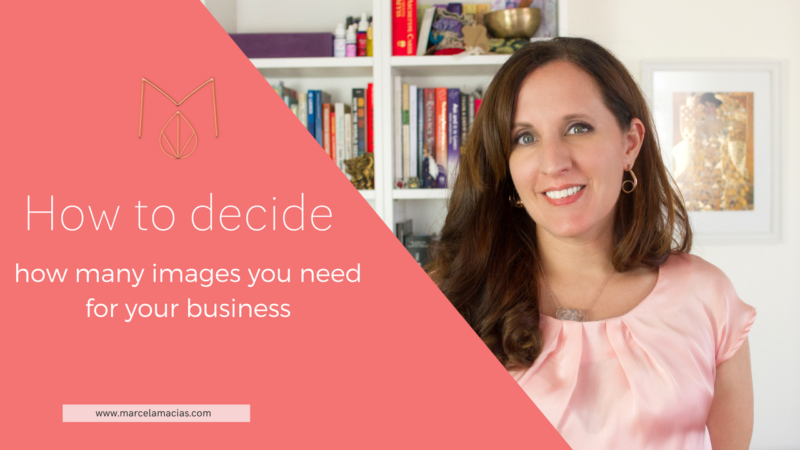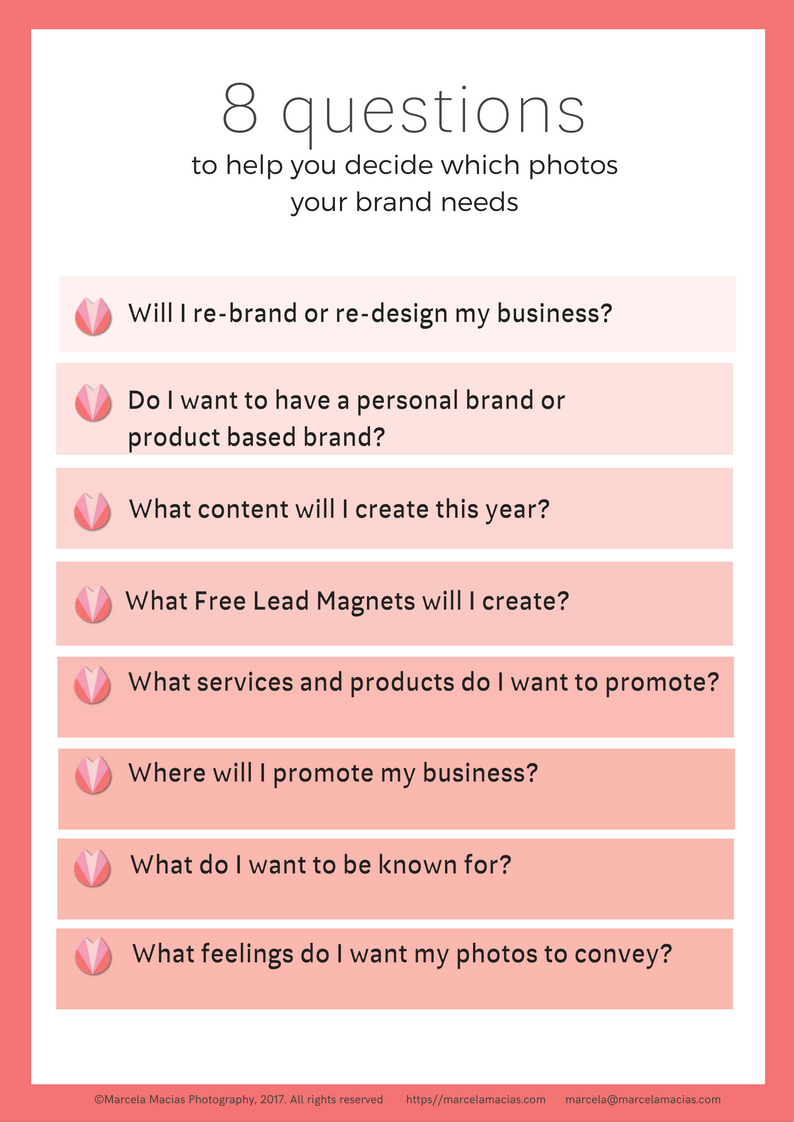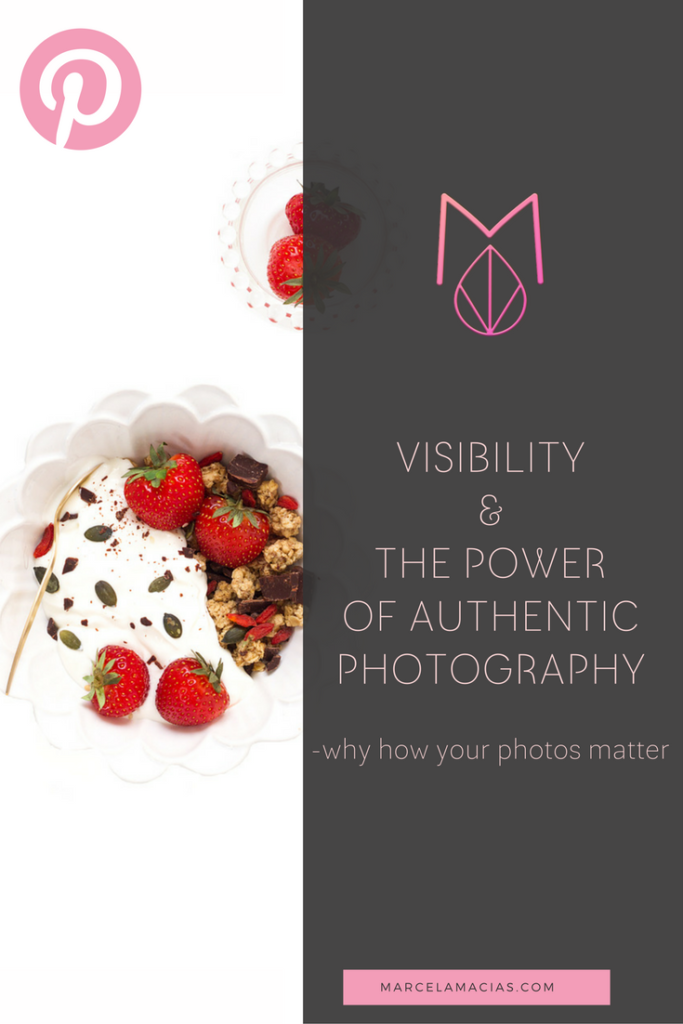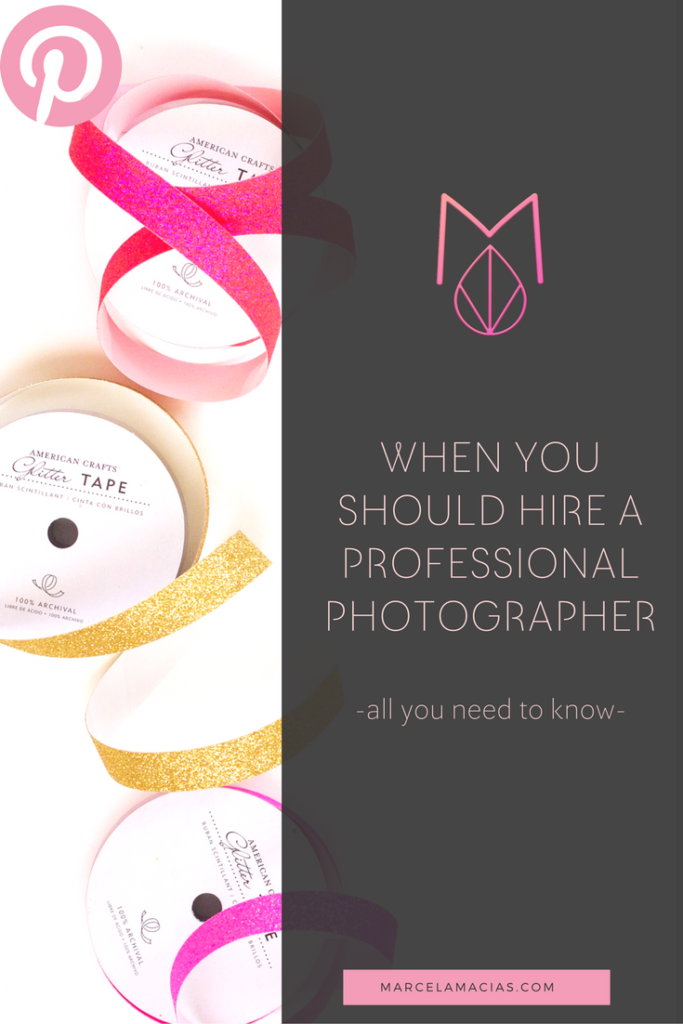Photographing Introverts: Ideas and Adaptations to help you feel more comfortable during your branding photoshoot
Photographing Introverts: Ideas and Adaptations to help you feel more comfortable during your branding photoshoot
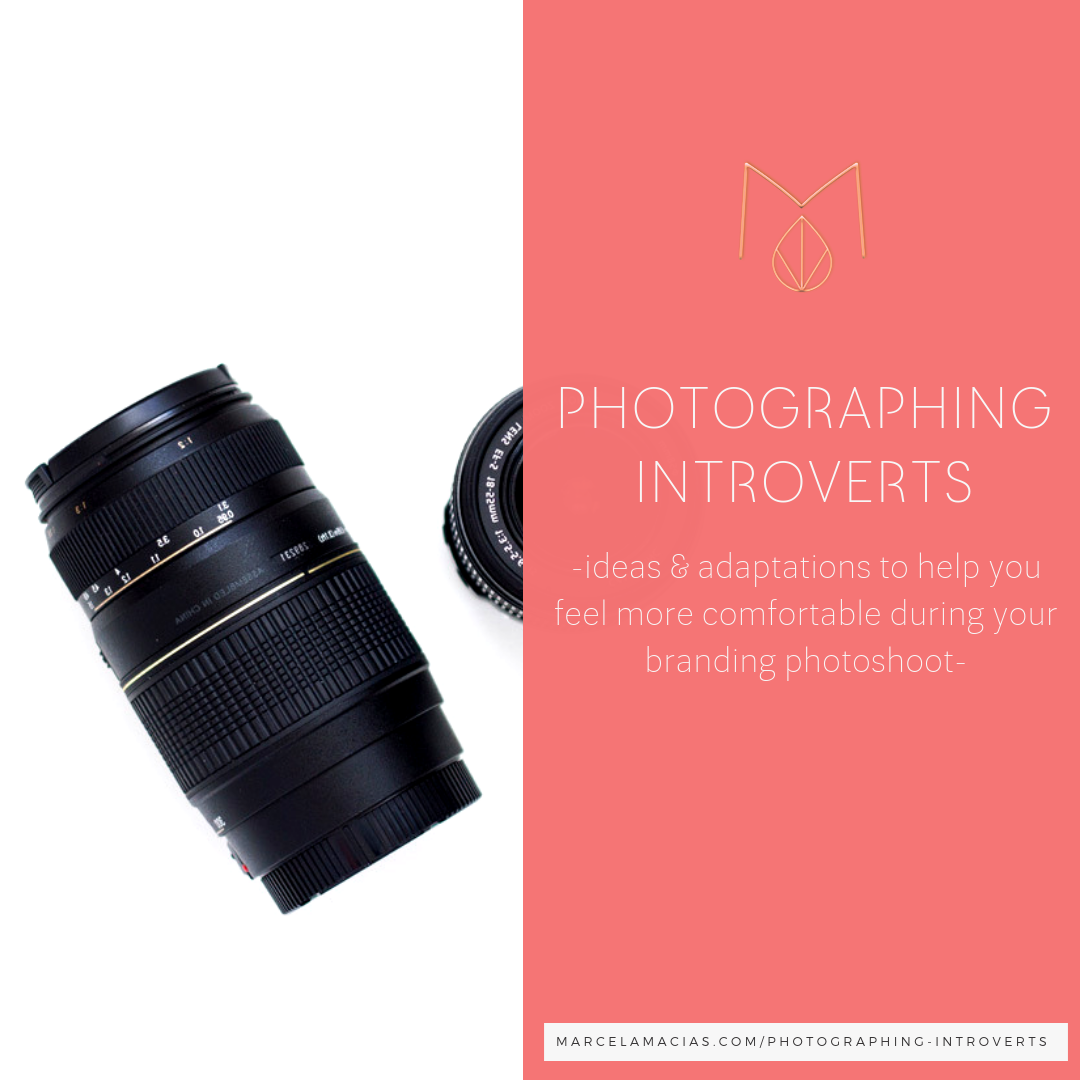
I am an introvert.
I’m not shy but crowded spaces, noise and overstimulating environments drain my energy. I need a lot of time of silence and loneliness in order to recharge. I prefer low light, calm and soothing environments, and rather minimal, yet cozy decoration.
Most of clients are introverts as well so, throughout the years, I’ve adapted my photographic process, the way I organize and structure photoshoots and the activities I include during a shoot day, to respect their energetic needs and make sure they move through the day happy, energized and excited.
I want my clients to shine in front of the camera, and I believe it is my job to make sure they’re comfortable with me, at ease in their surroundings (especially if we shoot outdoors), and overall feeling so great throughout the photo-shoot (however long it takes) that their smiles become blindingly bright and their eyes sparkle with joy.
In this blog post, I’ll tell you about adaptations that I regularly put in place to set my introverted clients at ease. Every person is unique, and I always check in with them, before and during the photoshoot how they’re feeling.
If you’re an introvert, some of these adaptations may not work for you, you may need different or additional things, or not need all of them, and that’s ok. I’m writing this as an inspiration, so you feel empowered to request what you need in order to feel your best during your photo-shoot. Because when you feel your best, you will look your best, and you will let your inner light shine brightly. Whatever it is that you need, we can probably make it happen.
I want you to be SEEN as you deserve this year.
I want you to feel confident to put yourself out there.
I want you to enjoy taking photos of yourself and to look forward to the next time you’ll be in front of the camera.
This is why I’ve made a list of what you can do to help your photographer create a photoshoot experience that feels wonderful for you, and that matches your energy. I’ve also listed my own process and why I do what I do below that,so you can get some ideas of what to ask and why when getting ready to book your own photoshoot.
Here’s what you can do:
Before the photoshoot, make sure you’re comfortable with your photographer and that you have agreed on a shared vision for your images. This will go a long way towards helping you feel at ease during your photoshoot.
I suggest meeting with your photographer, either in person or online, if possible. If not, you could email her information about your business, what you hope to achieve with your images (where you will use them, the feelings you want to transmit, whether there are formatting requisites she should consider, such as leaving space for text, etc). If your photographer does not create a moodboard for you as part of her services, you could share a Pinterest board with her, explaining what you like about each image, so you can then bounce ideas. Let her know if there are any images from her portfolio that called to you the most, and what you liked about them.
It can also be a good idea to follow a photographer you’re planning to hire on social media, just so you’re familiar with her voice, her style and her energy. The more used you are to interacting with her, the easier the day of the shoot can be.
Also, let your photographer know the following:
- If you need time to recharge after a certain time and what this time requires. Do you need silence and nature? Do you need to drink and eat something every couple of hours to be at your best? What kind of activities deplete your energy and which ones hep you recover?
- If certain locations, sounds and lights are too uncomfortable, overstimulating or overwhelming for you. Let me give you an example: In March last year we shot a few image at the Palais de Tokyo museum in Paris. We thought, before arriving, that they had a different exposition going, whereas the one that was actually there was an exposition on war. The lights were fluorescent, the sound of bullets and shooting very loud, and the images deeply disturbing. We had to leave, because it was intolerable.
- If you can’t stand crowded places, or would rather no one was watching while you have your photos taken. This will help your photographer monitor the times of day when certain locations that may be great for your brand are emptier of people.
- If you function better at certain times of the day. Our biorhythms are different. I, for example, am a morning person and function better early in the morning, so I can start the day full of energy, whereas others may need slow beginnings in order to be in top form around 10 am in the morning or after lunch. Your photographer can structure the day of the shoot to match the times when you are at your best, and give you time to recharge when you need it.
- If having the camera always pointed at you makes you uncomfortable, and you would rather have a more “undercover” style of shooting. Do you need your photographer to distract you? Would you like your photographer to be far away from you when shooting, so you’re not too intimidated by it? Take a look at my different shooting styles below for inspiration, we can make anything you need happen.
- If having lots of people around makes you uncomfortable. Would you rather have a one to one shoot (just the photographer and you) or can you stand a big team around you? There’s nothing wrong with wanting a more low key experience, just let us know so we can adapt the shoot to what you need.
- Any fears you have about the shoot, and things you would definitely NOT be comfortable with.
- If you want to check the images as they’re being shot in the little screen behind the camera, to help you make sure you like them so far, and correct anything that may not be what you desire.
Here’s how I have adapted my own process, according to the advice above:
1) BEFORE THE PHOTOSHOOT

As an introvert, I know being in front of the camera can be intimidating, especially if I’m not familiar with the person who will take photos of me or with the place where we will shoot. This was also a BIG issue with most introverts I contacted when preparing this blog post…so if you feel this way too, know you’re not alone.
Since I work mostly online, most of my clients hire me without having ever met me in person. They come to me because we have interacted on social media, they have followed my work and are a part of my community, or they come recommended by someone else. Add to this that I live in a small city, in a small island, 3 hour-flight away from most big European cities, which makes meeting before the photoshoot a difficult thing to do.
For this reason, I have created a thorough on-boarding process that allows my clients to get to know me as much as possible, and for them to know (weeks before we shoot) how everything will take place on the day of the shoot.
This is how this works:
-When a client signs up to work with me, I create a client page especially for them. In this page, I explain, step by step, everything about how we will work together. This includes all preparatory work they need to ( 3 branding tests and 1 branding questionnaire + a 1 hour meeting with me) and what I will do with it: prepare a moodboard, a list of possible photoshoot locations for them to approve, a list of props they may want to use in the photoshoot, a detailed shot list I suggest for their approval, and a list of archetypal symbolism associated with their branding archetypes. This page also includes all my contact information so they can reach me anytime.
– The Skype meeting allows my clients to talk with me and see how I work in real life. In it, I ask questions about their prep- work, we bounce ideas, we talk about props and keywords and inspiration and the feeling they want to transmit with their images. We discuss their marketing plan for the year following the Photoshoot, products they will release, social media platforms they are planning to use, topics they’re planning to talk about in their blog posts and newsletters, and discuss how their new images will support these goals. We also discuss clothes, accessories, hair and makeup and they are free to ask me absolutely anything they want to know or that makes then uneasy about the photoshoot.
– The Moodboard I create allows my clients to get an idea of the look and feel I envision for their photoshoot, and why I choose it. It is based on their tests results, questionnaires and on our meeting and it allows my clients and me to agree on a shared vision before we take a single image. It is, as everything I do, subjected to their approval, and I’m available to rework it until they’re 100% happy with it.
– The list of suggested locations allows us to plan an itinerary for the day and to know what to prioritize in case we don’t manage to reach all places where we’d like to shoot. Each location is selected to match the look, feel and vibe of moodboard and is, of course, subject to approval from my clients. This allows us to visualize how the day will go. Where will we begin shooting? Where will we go next? What clothes will be better for each location? What light is better for each place? What time of day are those locations with less people around? What caffés and restaurants and parks and quiet areas do we have within close distance of each location, where they can have a moment of quiet to refuel and recharge? What covered areas are there close by, in case it rains? All these are details I add to a google map that I save in my phone app, which I carry with me on the photoshoot.

– I also send them, together with the moodboard and the list of suggested locations, a Guide with advice on how to get ready for the photoshoot. This guide includes everything we discussed about clothes, props, and what to bring, as well as a description of how the day will go and a list of suggested shots for their approval. I am also available for them to contact me via email at any time, with any doubts they may have.
I try to make it a point, as far as possible, to book my airplane tickets for the day before in the morning, so that I’m available to meet for coffee the day before of the shoot, if my clients want to. This way we can talk about anything else they need, go over outfits and adjust the itinerary according to the weather forecast.
One important note about my process: It is not inmovable. When I was preparing this post, I asked in business groups I am a part of what fellow introverts preferred, and some of them mentioned that they would rather do everything via email and not meet in person or via Skype because of social anxiety. If this is your case, I want you to know that all these processes can be adapted to suit your needs. Just let me or whoever you choose as your photographer know how you prefer to work: you being comfortable is what’s important.
2)DURING THE PHOTOSHOOT

The day of the photoshoot, whether this is a 2 1/2 hour shoot, or a full day, my main focus (apart from capturing them in all their glory) is to take care of my client’s energy. In order to do so, there are some things that I’ve learned work better, both through experience (cough mistakes cough) and by asking questions to other introverts like me about what they prefer.
These are:
a- Slow Beginnings
In my experience, most introverted clients need to slowly ease into the day of the shoot. No blasting loud music during hair and makeup and no starting the shoot jumping up and down the city.
What starting slow and easy means is that we begin the photoshoot talking, testing poses, and normally photograph for the first hour in one location, in whatever outfit is their favorite. We may do breathing and visualization exercises to help them relax and feel comfortable with me. I also show them the images we take, so they let me know what they prefer and so they get comfortable with seeing themselves in photos (and they can see how gorgeously beautiful they really look).
If this was a movie, it would the part of it where you see a slow Sunday morning with sunlight streaming down the windows, and the heroine drinking her coffee while reading the newspaper. No rush, no stress, just a quiet enjoyment of the beginning of the day.
b- Pauses, breaks and down time
During a long day of shooting, it’s important that my client’s energy stays stable and their vibration high, because this is reflected in their images. In order to do this, I need to schedule pauses, break, as well as slower paced shooting times, when they can recharge and recuperate. This includes times when they can eat or drink something that will keep them nourished and full of energy.
The way I do this is by carefully planning the itinerary of the day and making sure the different locations are close to cafés and restaurants that match their style, where we can quickly grab a drink or a bite, as well as switching locations where the ones we’re at become busy or crowded.
So, for example, if we’re shooting in an office area, I will make sure we leave when people go out for lunch and move to a quieter place, like a nearby park. We may shoot in more touristic areas in the early morning, to ensure they’re as empty as possible, or schedule the shoot during weekdays (instead of weekends) in places that tend to be frequented by families or large groups of people.
c-Location, location, location
Before shooting, I research locations to make sure the ones we like are not crowded, so my clients don’t feel self conscious having people watching them while we shoot; or too noisy or overly stimulating.
I also check the lighting of the places they’ll be photographed in, to make sure it’s not too harsh and bright, or look for alternative areas where we have natural, soft light nearby. If my client wants to shoot in a private area like a hotel lobby where they love the decoration or a museum, or a botanical garden, I will always call first to request permission, and ask the venue which time of the day there are less people around, so they can feel more comfortable shooting. During my latest photoshoot in Switzerland, for example, we shot at the Hotel Beatus, early in the morning, when most guests were either sleeping or at breakfast. When I shot at Winterthur Museum, we did so on a Friday morning, when it was almost empty.
e- Shooting style
I also adapt my shooting style to my client’s preference and/or switch it during the day so it doesn’t feel so much like a photoshoot, but more like having a fun day where a camera is involved. We normally switch back and forth between the following:
a- Posing: Most of my clients don’t like traditional posing, where a photographer makes you stand in front of the camera and tells you to look there and move your right arm there and the neck to the other side and the leg down and you feel like a contortionist in a circus and a little bit awkward and a lot on the spot.
But just because someone may not like posing it doesn’t mean they don’t like to be gently guided to look their best. The goal, after all, is for my clients to have images they love. And, mostly for them to love images where they can recognize themselves.
I am convinced that branding photography is about revealing your inner light, not about changing yourself into something you’re not. So, at the beginning of the photoshoot I will spend lots of time observing my clients and taking lots of images. I want to see how they move naturally, how they smile genuinely, how their hands move when they talk, how their eyes shine when they think about something they’re exited about. And then, when we shoot the rest of the day, I’ll take this knowledge and use it to give them small indications here and there, and adapt the angle I shoot from or the lenses I use, so they always look their best without feeling self conscious.
b- Photojournalistic lifestyle images. By photojournalistic I mean the images where a person is not posing but rather doing something else. I will normally shoot these type of images after shooting headshots or traditional portraits, so my clients can relax again, without feeling self- conscious by having a camera being pointed at them all the time.
These may be, for example, close up shots of my client’s hands when meditating, or images of them walking down the street (shot with a telephoto lens, so they don’t feel being chased by a paparazzi), or reading a favorite book, or having a coffee.
When I shoot these types of images, I sometimes remove the sound from the shutter of my camera, so it’s silent when I click and my client is not disturbed in what she’s doing. This helps them relax and makes the images look more natural.
c- Play. This is a recourse I use a lot during photoshoots to distract my clients and help them look relax. This is also how I get their most genuine smiles and laughs on camera.
There are two ways I do it, and which one I choose depends on my client’s personality and the images that suit their brand best:
– I do something silly myself, like make a ridiculous face, or jump or say something unexpected or funny. (I can be a bit of a clown so this comes with no effort, I must admit)
– I ask my client to do something they don’t expect that includes body movement, like jumping or dancing. The objective of these requests is twofold: Photos with movement look amazing and are great at starting conversations, and the BEST smiles and laughs happen before or after a client does something out of the norm and THAT is when I take the photo.

Another great way to play is something that Ria Gor from https://www.bethecreativepenguin.com suggested to me when I was asking introverts what they prefer: She said she asks her video clients to pretend they’re a famous star in order to embody that confidence. I thought the idea seemed like fun, especially if you’re super self-conscious. I have also played with this idea, but with archetypal alter egos (Mine is…Gandalf, obviously 🙂 )
f-Zero Pushing
Finally, my policy in general is one of zero pushing. I make suggestions, and try to make the day as playful and fun as possible, but I never ever, ever push a client to do something they’d be uncomfortable doing or that they feel would be completely out of character for them. I want the experience of having a Photoshoot to me to be as pleasing as the final photos they get.
In my next blog post, I’ll tell you the energetic tools I use during photoshoots to support my client’s energy.
Now it’s your turn:
If you’ve had a photoshoot before: what parts did you love? What suited your personality best?
If you’re an introvert: would these adaptations work for you or would you need something else?
Let me know in the comments below!
Did you hear?
This Spring, I’m traveling to Amsterdam to photograph a select group of driven, heart-centered & soulful entrepreneurs who are ready to invest in visuals that are archetypally aligned, highly customized, beautiful, authentic, strategic and effective to propel their business success.
Ready to do this? Click the button below to learn more about the 3 different packages available and book a call to get you started.
I can’t wait to work with you!


